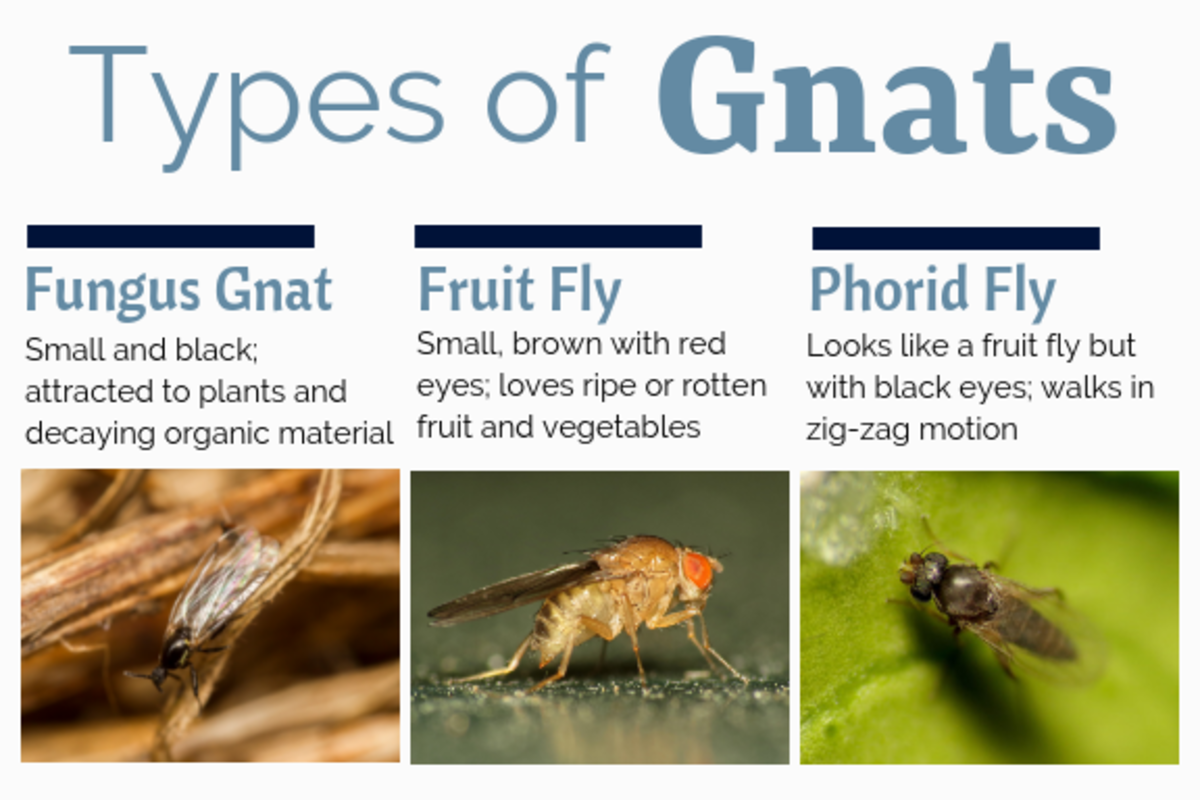Table Of Content

Bug zappers designed to attract and kill gnats, as well as pyrethrin-based sprays, are effective. If you're experiencing an abundance of gnats in your house, several factors could be contributing to the problem. Gnats are attracted to warm, moist environments and breed in damp areas, so reduce or eliminate areas where water collects in your yard and house. These tiny flying insects are a nuisance, hovering around faces and swarming in large numbers. The best answer is to quarantine new plants or those that have been outdoors for extended periods.

Battle Drain Flies with Bleach
Since the gnats are attracted to the flame, they'll either hit the flame itself or fall into the water and drown. While the candle is lit, we recommend staying in the room to observe the flame until it's time for it to be blown out. For gnat problems on and around your houseplants, consider using diatomaceous earth.
What attracts gnats to you?
If your plants at home are generally healthy and there are only a few flies, it can be challenging to spot sight of houseplant gnats. Of course, seeing minuscule mosquito-like flies is a sign of a gnat problem. No, it’s unlikely that gnats will go away on their own once they start reproducing. You will need to take proper measures to get rid of them, such as putting away your fruits, flushing out your drains, or changing the soil in your indoor plants’ pots.
Bleach Drains
Aerosol sprays with pyrethrins are very effective at killing adult gnats, Schutter says. Clear your plants and soil of decaying leaves, flowers, or organic matter. Remove dead flowers, leaves, or other plant parts from your plants.
Identifying Infestations
Consistent efforts to remove breeding sites, use traps and maintain cleanliness are crucial for successfully eliminating a gnat infestation. In Arizona, the duration of a gnat infestation can vary depending on the species of gnat, environmental conditions and the effectiveness of control measures. Keep your kitchen clean because gnats are attracted to food scraps. Overripe fruits and vegetables can attract gnats, so keep your kitchen clean and trash properly disposed of.
With a little diligence, you can turn your home into a fly-free zone. You might need to call in an expert to positively ID these pests. Luckily, there are some things you can do to help get rid of gnats quickly to prevent a future infestation.
How To Get Rid Of Fungus Gnats
How to Get Rid of Gnats - USA TODAY
How to Get Rid of Gnats.
Posted: Sun, 07 Apr 2024 07:00:00 GMT [source]
Fortunately, there are numerous remedies available to rid your home and yard of gnats. There are a handful of biological controls for fungus gnats, but they are mainly used in greenhouses where plants are being propagated. If a gnat problem gets so out of hand with houseplants that you are considering biological controls, you are probably better off sacrificing your houseplants and starting over. Existing fungus gnat larvae can be trapped using pieces of raw potato. Place the potato pieces flesh side down on the soil, and check under them every couple of days.

Clear Your Drains and Garbage Disposal
Gnats are swarming in Houston. Here's how to get rid of them - Houston Chronicle
Gnats are swarming in Houston. Here's how to get rid of them.
Posted: Sat, 06 Apr 2024 07:00:00 GMT [source]
Once the pest's food source or breeding site is cleaned up (or never allowed to linger in the first place), the issue should be resolved. Gnats and small flies that appear inside homes are drawn to rotting organic matter, which they use for both a feeding and breeding site. You will want to address as many of these sources as you can to get rid of them. If you find gnat eggs or larvae on clothing, do not throw the item away.
How to Prevent Gnats in Your Home
The best thing is they contain no chemical insecticides, odor and are more user-friendly. Found throughout North America, fungus gnats, part of the Mycetophila genus, are typically the culprits for indoor gnat issues. Fungus gnats generally are between 1/8 and 1/4 inch long (4 to 7 mm) and can be brown, black, or yellowish. If none of these solutions seem to be working and the gnats keep returning, it may be time to call in a professional.
Sticky yellow strips are essential to winning your battle against these tiny flying bugs. These traps help to capture a large number of adult gnats and prevent them from laying more eggs. Place the yellow fungus gnat traps horizontally at the soil surface. While adult fungus gnats are more of a nuisance than a danger to plants, their larvae can stunt plant growth and damage plant roots. Larvae, which are early-stage gnats in maggot form, feed on organic matter and chew on plant roots. Large numbers of gnat larvae can significantly damage young plants and seedlings.
To kill gnat larvae, try a mixture of soapy water and spray it on your plants’ soil, O’Neill advises. Use one tablespoon of liquid soap (such as dish soap) with one quart of water and spray onto the soil to remove gnat larvae. If you've noticed a swarm of gnats lingering around your sink drains, you may have drain flies. Carefully dilute one-half cup of bleach with about one gallon of water and pour it down the affected drain. If houseplants are the source of your gnat issue, kill off any larvae in the soil of your houseplants by digging down 2 to 3 inches and turning the top of the soil over.

No comments:
Post a Comment